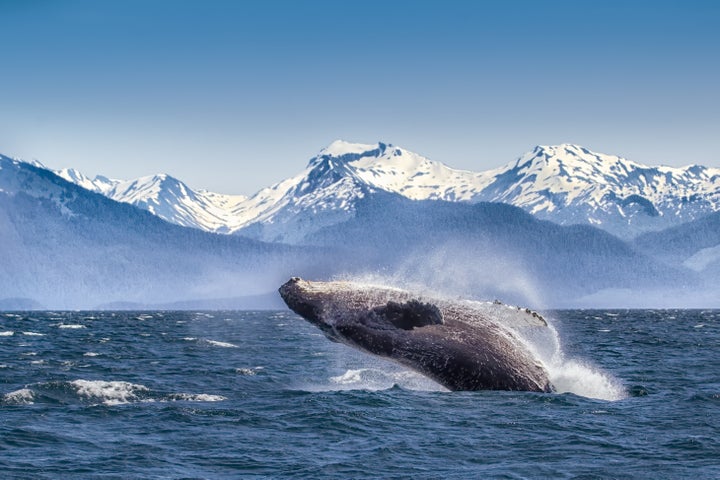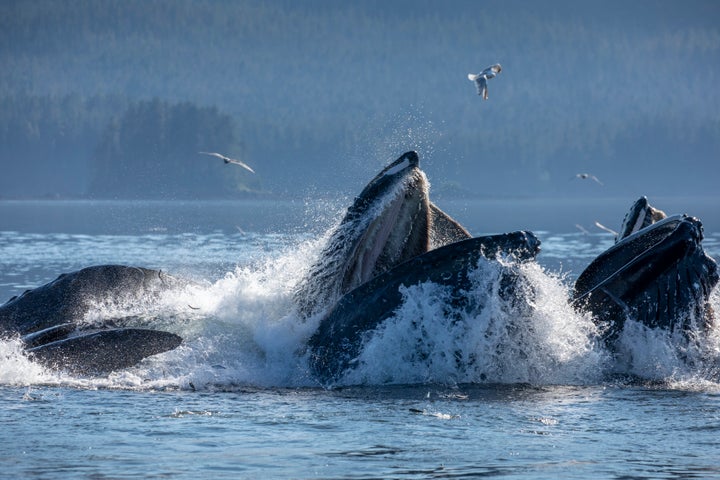The COVID-19 pandemic has allowed humpback whales in Alaskan waters to experience a quieter environment than usual, and there has been a marked difference in their behavior.
The cruise ships that play a big role Alaska’s tourism industry generate loud noises underwater that interfere with the activity of marine mammals. With cruises largely being a no-go during the pandemic, overall marine traffic in the state’s Glacier Bay dropped by about 40%, the BBC reported in a comprehensive piece about the whales in southern Alaska.
Humpback whales previously stuck close by each other and communicated in less complex ways, similar to people in a loud bar, National Park Service wildlife biologist Christine Gabriele told the BBC. But with fewer ships, whales spread out across greater distances and their whale songs became more varied. Mothers were observed giving their calves more freedom and even sometimes taking naps, she said.

The first large cruise ship in 21 months ― a test voyage aimed at gauging how well COVID-19 precautions would work ― returned to Alaska last month, according to the Anchorage Daily News.
Gabriele and other researchers spoke to NPR last summer about how the halt on cruises, along with international shipping slowing down, provided a unique opportunity to observe the impact of decreased sound on Glacier Bay’s whales.
“Whales use sound in almost every aspect of their daily life,” she said.
Scientists hoped that finding out more about how underwater sound affects whales would be helpful in crafting conservation policy.
“More needs to be done,” Jason Gedamke of NOAA fisheries’ ocean acoustics program told NPR. “When you have animals that for millions of years have been able to communicate over vast distances in the ocean, and then once we introduce noise and have increased sound levels and they can’t communicate over those distances, clearly there’s going to be some impact there.”

Whales are far from the only wild animals that saw at least temporary benefit from decreased human interference when COVID-19 struck. In the early months of the pandemic, a plunge in travel led to a significant drop in wild animals being hit by cars, according to research from the University of California, Davis.
And when U.S. national parks were closed to visitors in 2020, wildlife thrived and animals were seen boldly ranging over areas they previously avoided due to human presence.
